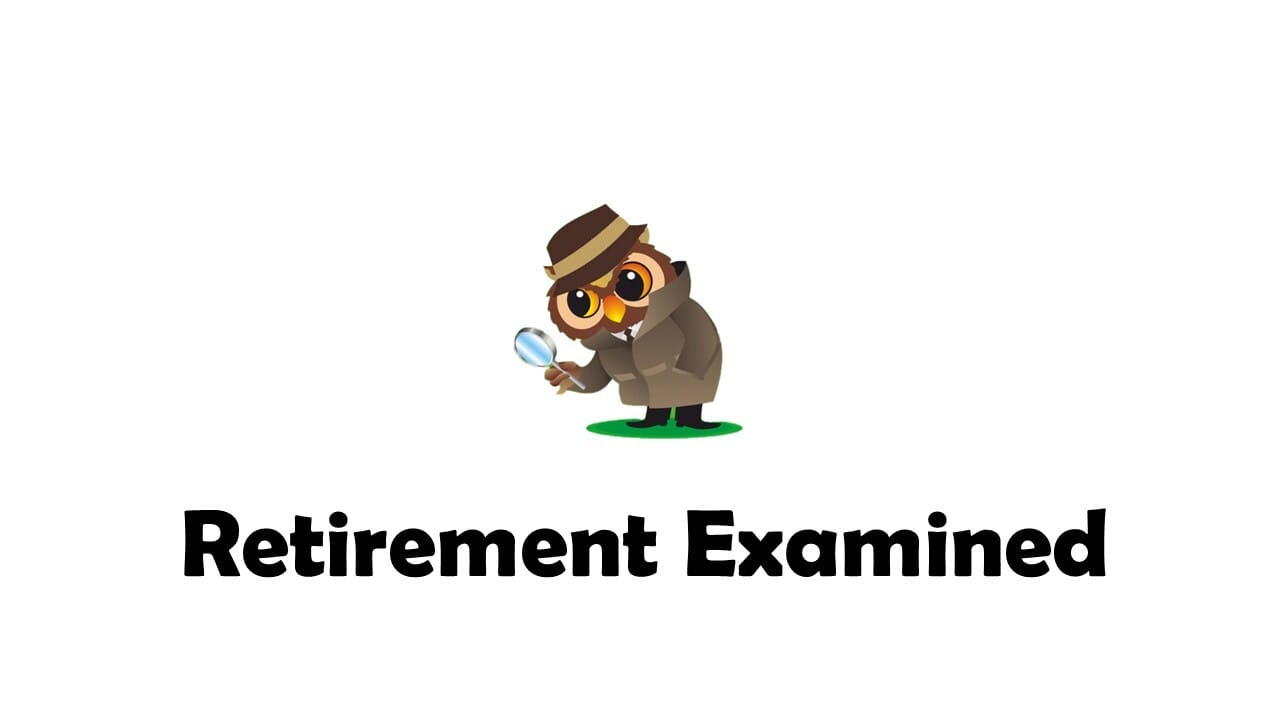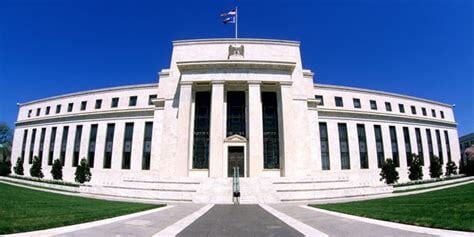- Retirement Examined
- Posts
- Retirement Examined
Retirement Examined
5-Minutes of Breakthrough Secrets: Happy, Fulfilling Retirement

The weekly email that keeps you up to date on exciting Retirement topics in an enjoyable, entertaining way for free.
The Silent Thief: How the Federal Reserve Engineered a Century of Inflation and Economic Erosion
by Eric Seyboldt, MBA

Since the Federal Reserve’s creation in 1913, the U.S. dollar has lost over 3,000% of its value. What once bought a home, a car, and a year’s worth of groceries is now pocket change. The dollar has been hollowed out—not by accident, not by market forces, but by design. The Federal Reserve was introduced as a safeguard against financial instability. Instead, it has become the single greatest driver of economic erosion, fueling a relentless cycle of inflation, debt, and asset bubbles that have systematically stripped wealth from the working class while enriching those closest to the money printer.
For over a century, inflation has quietly stolen from savers, crushed fixed incomes, and reshaped the American economy into a system that punishes prudence and rewards speculation. Retirement dreams have been shattered, wages devalued, and housing turned into an impossible aspiration for younger generations. The biggest deception in modern economics? That this was all inevitable. It wasn’t. It was engineered.
How Inflation Became the Default Setting
Inflation is not a law of nature. It is a policy choice. Before the Federal Reserve, the U.S. dollar was tied to gold, and price stability was the norm. A dollar in 1800 had roughly the same purchasing power in 1900—a century without systemic inflation. But with the establishment of the Federal Reserve, the ability to print money without limits became reality.
By 1971, when President Nixon severed the dollar’s last connection to gold, the restraints were gone. The government could now create money out of thin air, no longer bound by the discipline of physical reserves. The result? The purchasing power of the dollar collapsed.
Consider this:
In 1913, a loaf of bread cost 5 cents. Today, it’s over $3.50.
A home in 1913 could be bought for $3,000—the equivalent of about $96,000 when adjusted by pre-Fed standards. The actual median home price today? Over $400,000.
A college education in 1960 could be paid for with a summer job. Today, it requires decades of student loan payments.
Every one of these price surges stems from the same cause: the unchecked expansion of the money supply. When the Federal Reserve floods the system with cheap money, asset prices skyrocket. Those who own real estate, stocks, and businesses see their wealth multiply. Those who rely on wages alone fall further behind. The very institution meant to "stabilize" the economy has, in reality, created the greatest wealth transfer in history—from the middle class to the financial elite.
Inflation is often dismissed as a mere inconvenience, but its effects run deeper. It is, in essence, a tax—one that no one voted for, no one can avoid, and no one ever stops paying. It is a slow-motion heist that siphons wealth from workers, retirees, and savers and deposits it into the hands of asset holders and banks.
This hidden tax has two key effects:
Savings Are Punished: Money sitting in a savings account earns interest at a fraction of the inflation rate. A retiree who saved a lifetime for a comfortable future finds that their money buys less and less each year. The prudent are penalized, while borrowers and speculators thrive.
Debt Becomes the Default: As dollars lose value over time, the incentive shifts from saving to borrowing. Why hold onto money that loses value when it can be spent or invested before it depreciates? The result? A nation drowning in debt. Consumer debt, student loans, corporate borrowing, and a federal deficit exceeding $34 trillion—none of it could have existed at this scale without the Fed’s policies.
Who Pays the Price?
Every economic crisis of the past century has the Federal Reserve’s fingerprints on it. The Great Depression of 1929, the stagflation of the 1970s, the dot-com collapse of 2000, the subprime mortgage crash of 2008—each one fueled by Fed-driven excess liquidity, followed by abrupt tightening that sent markets into chaos.
And now, a new crisis looms. With the national debt spiraling, interest rates rising, and inflation still outpacing wage growth, the system is reaching a breaking point. The cost of borrowing is becoming unsustainable, but so is the cost of living.
Homeownership? Out of reach for millions.
Retirement? A fading dream.
The dollar? Weakening as the world questions its long-term stability.
At some point, the cycle must break. The question is: will it happen through a controlled return to sound money? Or will the U.S. follow the fate of every empire that has debased its currency—into stagflation, social unrest, and economic decline?
What Comes Next?
The truth is stark: no nation in history has survived unchecked monetary expansion. From ancient Rome to Weimar Germany to modern Venezuela, every society that chose inflation as a long-term strategy eventually collapsed under its weight. The United States is not immune.
The only path to stability is through monetary restraint—either by restoring a gold standard, embracing a digital alternative like Bitcoin, or imposing fiscal discipline that halts the runaway expansion of debt and dollars. But none of these changes will come from the Federal Reserve itself. The system is built to perpetuate inflation, not to correct it.
The time to wake up is now. The price of complacency is economic servitude, where wages never keep pace, savings are always at risk, and financial security remains just out of reach for all but the wealthiest. Inflation is not a mystery, and it is not an accident. It is a policy—a deliberate, ongoing, and devastating choice.
And until that changes, the silent thief will keep stealing.
Reach out to us for a complimentary, 10-minute consultation call. Let's explore together how we can help you select the right Medicare Supplemental Plan, ensuring your golden years are as fulfilling and worry-free as you’ve always imagined. Give us a call today at 614-943-2265 to schedule your consultation. Let's make your retirement dreams a reality!
If you're frustrated by one-sided reporting, our 5-minute newsletter is the missing piece. We sift through 100+ sources to bring you comprehensive, unbiased news—free from political agendas. Stay informed with factual coverage on the topics that matter.

The High-Stakes Dilemma: Can Retirees Afford to Bail Out Their Families Without Wrecking Their Own Futures?
by Eric Seyboldt, MBA
Client: "Eric, my daughter and her husband are struggling financially, and they asked me for help. I don’t have a huge nest egg, but I want to support them in some way. How do I balance my generosity with making sure I don’t run out of money in retirement?"
Eric: This is the razor’s edge of retirement planning—the intersection of love, responsibility, and financial reality. Many retirees find themselves caught in this dilemma, feeling a deep moral obligation to help their families but knowing that their own financial security is precarious. Unlike retirees with multimillion-dollar portfolios who can afford some degree of generosity, those with more modest savings face a far graver risk: one misstep could mean financial ruin.
Let’s not sugarcoat it—if a retiree with limited savings gives too much away, they may be jeopardizing not just their future but the future of those very family members they are trying to help. Because once those funds are gone, there’s no salary to replenish them, no second chance to rebuild wealth. And when a retiree runs out of money, who will be there to support them? Ironically, it often falls on the same family members they once bailed out.
The Economic Reality of Limited Savings in Retirement
Retirees with savings of $200,000 or less face an entirely different financial calculus. Even at a 4% withdrawal rate, this only provides around $8,000 per year before taxes—a mere supplement to Social Security. With inflation eroding purchasing power, long-term care costs rising, and unexpected medical bills always a threat, every dollar must be carefully managed.
If a retiree gives a family member even $5,000 or $10,000, that’s not just a gift—it’s a potential six months of groceries, a year of Medicare premiums, or a safety net in case of a health crisis. The consequences of an ill-planned act of generosity at this level are exponentially higher than for those with seven-figure portfolios.
Retirees in this position are not just battling financial constraints; they’re also battling guilt, expectations, and the deeply ingrained belief that parents should always be there for their children. Society often reinforces this mindset, making it difficult to say no when family members ask for help.
Yet, retirees must recognize that financial security in retirement is not just about avoiding poverty—it’s about maintaining independence. Many who give away too much too soon end up becoming financially dependent themselves, a situation that strains family relationships and can lead to resentment.
How to Help Without Risking Everything
So, what’s the strategy for a retiree who wants to help but has limited resources? It requires precision, discipline, and an alternative way of thinking about support.
Set a Hard Limit on Giving – Before offering any financial help, a retiree must define the absolute maximum they can afford to give—without disrupting their own security. This means prioritizing essential expenses, creating a cushion for emergencies, and ensuring there is enough left to sustain them through their later years.
Prioritize Non-Monetary Support – Not all assistance needs to be in the form of cash. Offering childcare, housing assistance (if feasible), or even helping a family member improve their financial literacy and budgeting skills can be far more impactful than a one-time check.
Structure Any Help as a Loan—Not a Gift – If a retiree chooses to provide financial assistance, structuring it as a formal loan with clear repayment terms can reinforce responsibility and prevent repeat requests. Even a small interest rate can help ensure that the retiree isn’t losing money over time.
Leverage Community Resources – Many struggling families have access to assistance programs, grants, or local services that can provide relief without draining the retiree’s finances. Encouraging a family member to explore these options first can reduce the need for direct financial aid.
Focus on Sustainable Giving – Instead of a lump sum that depletes savings, retirees can offer structured support, such as paying a specific bill each month, covering groceries, or contributing toward an emergency fund over time. This approach ensures that they don’t overextend themselves financially.
The Final Word: A Retiree’s First Duty Is to Their Own Future
Let’s be crystal clear—generosity is admirable, but financial survival is non-negotiable. The painful truth is that a retiree who gives away too much and then runs out of money may ultimately need the same financial help they once provided. The best way to help family in the long run is to ensure that help is never needed in reverse.
So before making any financial commitments, pause. Do the math. Consider the risks. Because the most powerful act of love is not a blank check—it’s ensuring that no one has to worry about your financial stability in the years to come.
Contact us for a free, brief 10-minute consultation. Together, we can discuss ways to safeguard your wealth and ensure your retirement years are as enjoyable and stress-free as you've envisioned. To arrange a complimentary 10-minute consultation call us today at 614-943-2265. We're here to help turn your retirement aspirations into reality.

Fixed annuities can be an essential component of a well-rounded retirement strategy, offering security, predictability, and efficiency in financial planning.
These are current fixed annuity rates and their durations from Top A-rated carriers (subject to change at any time, not FDIC insured):
Rates are Holding Steady This Week! Don’t Wait To Lock These Fixed Annuity Rates In Today!
3-year: 5.20% (under $100k Deposited)
3-year: 5.15% (over $100k Deposited)
5-year: 5.15% (under $100k Deposited)
5-year: 5.35% (over $100k Deposited)
Please feel free to call Eric at 614-943-2265 if you’d like to ask any questions or request information on these fixed annuities or other retirement topics that are on your mind.

“The golden years shine brightest when you learn to live simply, love deeply, and give generously.”

Socrates
REAL ASSETS, Invest Like the Ultra-Wealthy

Have You Considered Adding ‘Real Assets’ like Gold or Bourbon to Your Investment Portfolio?
Amid the current economic uncertainty, savvy investors are increasingly turning to physical assets as a safeguard for their retirement savings. Tangible options like gold and even bourbon barrels are gaining traction, offering a reliable shield against the effects of inflation and excessive currency production. These real assets not only provide a strong defense but also add valuable diversification to portfolios, even during stable economic periods.
Historically, physical assets have demonstrated superior performance compared to other investments during times of market turbulence and financial instability. They consistently deliver dependable protection against economic upheavals. Integrating tangible assets into your investment strategy can be both strategic and rewarding.
In light of today’s economic challenges, considering physical assets may be a smart move to bolster the resilience of your financial plans. Are you interested in discovering how these investments could strengthen your portfolio?
Allocating funds into the asset class known as “Real Assets” may be a strategy that you should consider.
Ask us how to Rollover a portion of Your IRA or 401k To A BOURBON IRA (www.bourbon.fund/how-it-works/) or a GOLD IRA (see link below) and:
Safeguard your assets from the collapsing dollar
Incorporate the ‘REAL ASSET’ class into your portfolio like the ultra-wealthy
Hedge against the current high-inflation conditions
Protect your retirement assets against economic crises
Just get in touch. We make it easier than ever.
CONNECT WITH US

Eric Seyboldt, MBA
Feedback or Questions?
You’re invited to get in touch with us if you’d like to find out how the Novus Financial Group can help you on your journey to a happy, fulfilling life in Retirement.
Office: 614-943-2265
Feel Free To Forward Retirement Examined To A Friend and Have Them Subscribe By Clicking The Button Below:
Reach out if you’d like to advertise your business on Retirement Examined or would like to be a sponsor.
Investment advisory services are offered by duly registered individuals on behalf of CreativeOne Wealth, LLC a Registered Investment Adviser.
The content we provide here isn’t financial advice and cannot be taken as such. Please speak to your financial advisor before making any investment decision. Also, note that every investment comes with its risks and drawbacks. Lastly, we would like to remind you that past results cannot guarantee future returns.
This website contains one affiliate link. When you click on the link and make a purchase, we may receive a commission at no additional cost to you. We only promote companies that we have personally used or researched and believe will add value to our readers


